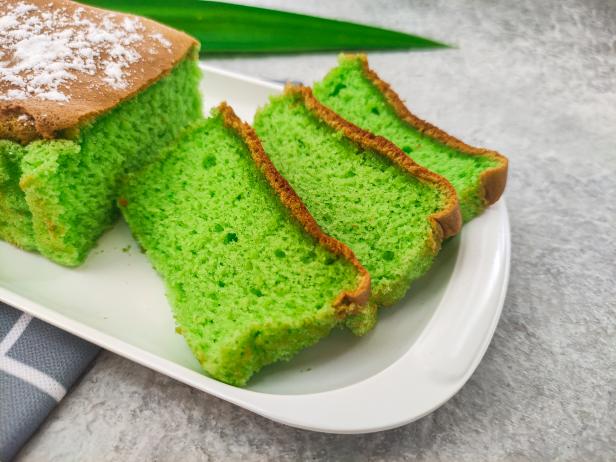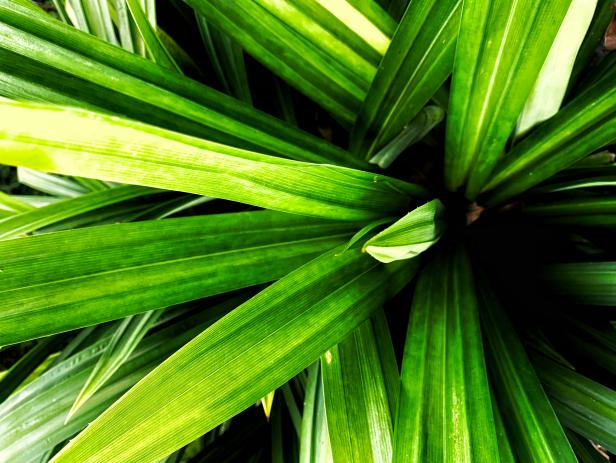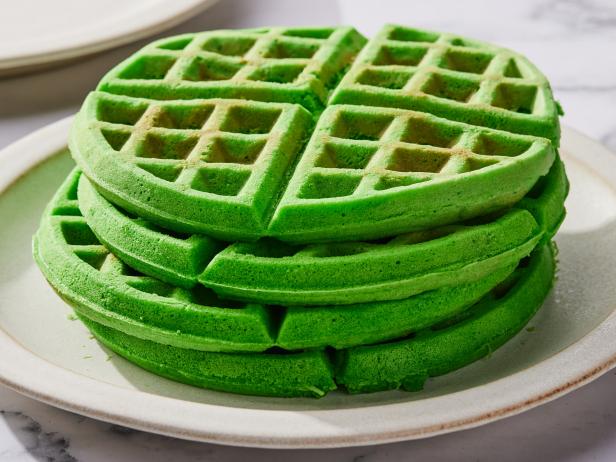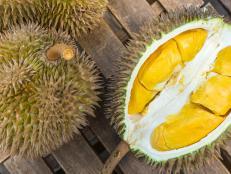What Is Pandan?
The tropical green plant provides vibrant color and flavor.

Andik Tri Witanto/Getty Images
By Clarissa Wei for Food Network Kitchen
Clarissa Wei is a freelance journalist based in Taipei.
Used to flavor everything from neon green chiffon cakes to coconut rice, pandan is a glossy tropical plant commonly used in southeast Asian cooking. It can be found in raw, powdered or extract form.
What Is Pandan?
Pandan refers to Pandanus amaryllifolius, a spiky tropical plant that looks a lot like the head of a pineapple and has a nutty, vanilla-like fragrance. It is cultivated specifically for its aromatic, deep green, lance-shaped leaves, which imparts flavor into other dishes.
Pandan Uses and Products
Pandan is used in both sweet and savory applications. The leaves can be found at specialty grocers in the United States—usually in the refrigerated or frozen section, but you may also find pandan extract or powdered pandan. Whole leaves can be thrown into a pot of rice with coconut milk to make a dish called nasi lemak or used to make a jam—again with coconut milk—called kaya.
Pandan extract, juice and powders are especially great for desserts and give off a vibrant green hue. Traditionally used in southeast Asian pastries, it can be folded into cookies and cakes. Pandan pairs especially well with other tropical ingredients like coconut, brown sugar and mango, but feel free to experiment and use it in lieu of vanilla extract. Culinary treats aside, the leaves can be dried and used to weave baskets and mats.
What Does Pandan Taste Like?
Milky with whifs of vanilla and hazelnut, pandan has a delightfully toasty flavor. The compound 2-acetyl-1-pyrroline (2AP) is responsible for its nutty aroma and has been identified in other fragrant crops like rice, soybean, coconut and taro.

Rizky Panuntun/Getty Images
How to Cook With Pandan
Knot and throw the leaves into any dish or braise for flavor, or use it as a wrap for grilling or steaming. Fresh leaves can be juiced and folded into desserts or boiled down to a shelf-stable extract. The leaves release a subtle flavor and don’t add much or any color to dishes; pandan extract is much more potent and is either used to impart a deep green hue to pastries or for an extra kick of flavor. A little goes a long way.
How to Buy and Store Pandan
Derived from a tropical plant that thrives in hot and humid conditions, fresh pandan leaves can be difficult to source in some areas. Check the refrigerated section of specialty stores. Use immediately or wrap in a damp towel and put in the fridge for up to four days. The leaves can also be bought frozen. Whole leaves can be juiced or boiled down, though should be used within two to three days. Shelf-stable pandan extract can be easily found online, though check the labels and make sure it contains actual pandan and not just green food dye.
Pandan Recipes

Matt Armendariz
Vietnamese pandan waffles (banh kẹp la dua) are a popular street food. Unlike most American-style waffles, this green-hued version is sweet enough on its own, so there's no need for any syrup or toppings.

In Singapore, kaya jam, a velvety spread made from coconut, pandan, eggs and sugar, is slathered on crisp toast and topped with a generous slab of cold butter to make a popular breakfast or afternoon snack. This recipe makes a generous batch of just over 2 cups of kaya; you’ll have more than enough for a week of breakfasts, or you can share your bounty with friends and family.
Related Links:
59 Healthy Breakfast Recipes to Start Your Day






















































